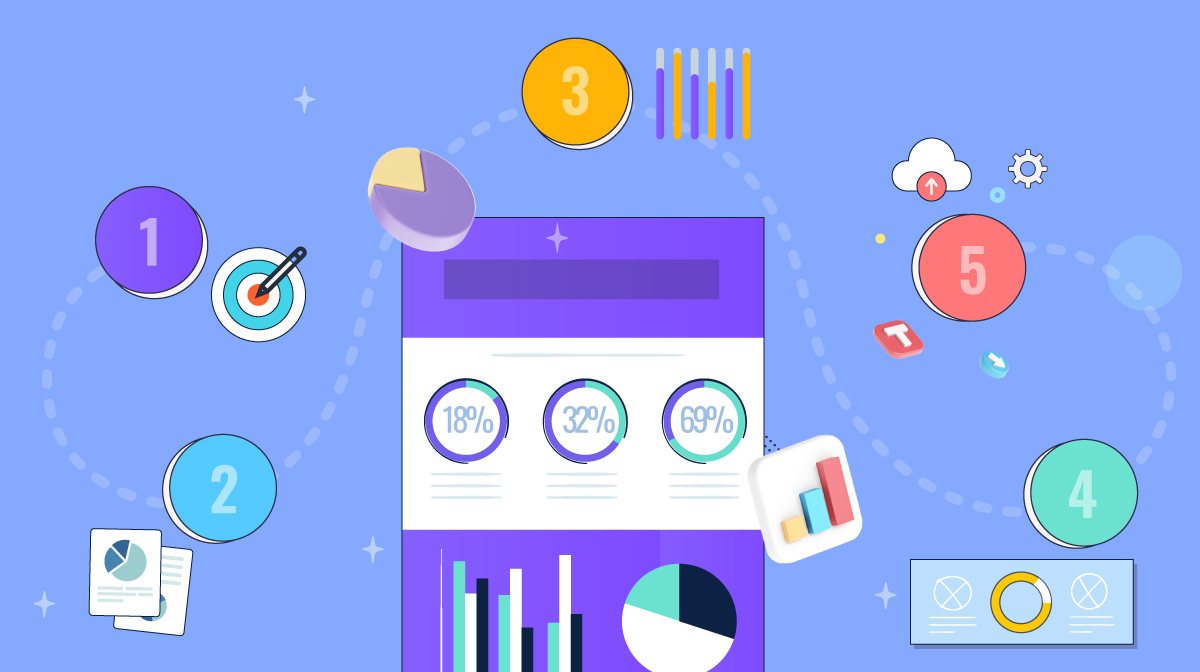Advantage of Infographics
Last Updated on July 25, 2024 by Richard Martin Linga
The advantages of infographics are numerous. They help us show complex information in simple, clear ways. Because they mix text and pictures, they catch the reader’s eye more easily. This means people are more likely to understand and remember the information. Also, infographics can be shared quickly on social media, spreading our message further. In other words, they are powerful tools for communication. Above all, infographics help us connect with our audience in a more engaging way. Therefore, using infographics can greatly improve our content strategy.
What are Infographics?
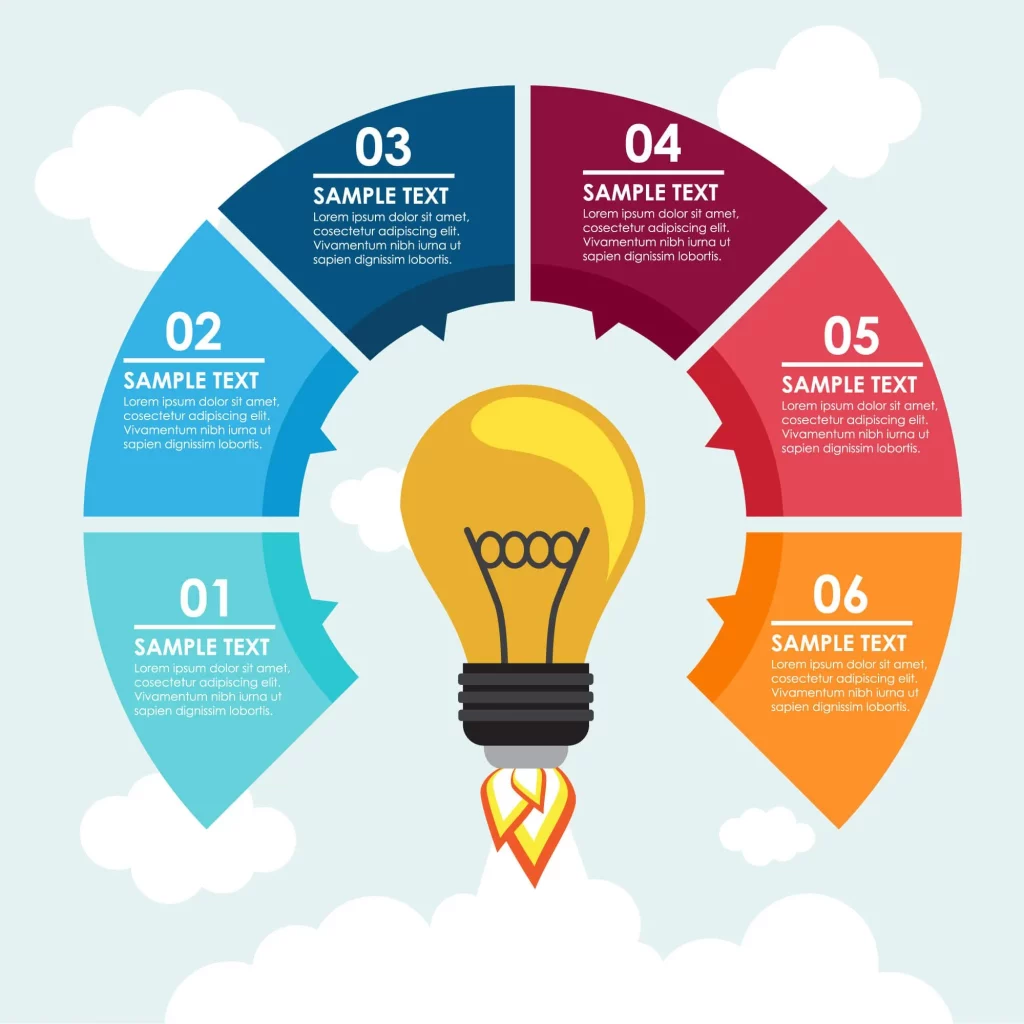
Infographics are visual tools that combine text and images to present information clearly. They help break down complex ideas into easy-to-understand visuals. For instance, charts, graphs, and illustrations can make data more accessible.
Infographics catch your attention quickly. They are colorful and fun to look at. Because of this, they help you understand and remember information better than plain text. The advantages of infographics include making learning and sharing more enjoyable and effective. If you want to improve your content, using infographics is a great idea. For help with creating amazing infographics, you can hire an SEO specialist in the Philippines.
Advantages of Infographics in Digital Marketing

Enhanced Engagement and Retention
Infographics are great for keeping people’s attention. They mix pictures and words to show ideas clearly. This helps people understand and remember the information. The advantages of infographics include making content more engaging.
For instance, colorful visuals can catch the eye faster than plain text. In addition, people often share infographics on social media, spreading the message further. Therefore, infographics are powerful tools for communication.
- Improved Understanding: Infographics break down complex information.
- Better Memory: Visuals help people remember facts longer.
Improved Comprehension and Communication
Infographics make it easier to understand and share information. They use images and simple text to explain ideas clearly. The advantages of infographics include improved comprehension and better communication.
For instance, visual aids like charts and diagrams break down complex topics. In addition, they help us grasp information quickly. Therefore, infographics are effective for teaching and explaining. Above all, they make learning more fun and engaging.
- Clear Explanation: Infographics use simple visuals to explain ideas.
- Easy Sharing: They are easy to share, helping spread information quickly.
Boosting SEO and Driving Traffic
Infographics can improve your SEO and bring more visitors to your website. The advantages of infographics include higher search engine rankings and increased traffic.
Infographics are often shared on social media, creating backlinks to your site. Also, they keep visitors on your page longer, reducing bounce rates. Therefore, infographics improve your site’s visibility. Above all, they make your content more attractive to readers and search engines.
For help with creating effective infographics, consider using SEO services in the Philippines. They can boost your online presence and drive more traffic to your site.
- Better Rankings: Infographics can improve search engine rankings.
- Increased Traffic: They attract more visitors to your site.
Infographics for Brand Awareness and Credibility
Infographics help people know and trust your brand. The advantages of infographics include boosting brand awareness and making your business look credible.
For instance, eye-catching infographics make your brand memorable. In addition, they show you care about sharing information clearly. Therefore, people are more likely to trust and remember your brand. Above all, using infographics helps build a strong, positive image.
- Better Recognition: Infographics make your brand stand out.
- Increased Trust: Clear visuals show you are reliable and professional.
Increased Shareability and Virality
Infographics are easy to share and often go viral. The advantages of infographics include making content more shareable and likely to spread.
For instance, infographics are visually appealing, so people like to share them on social media. In addition, they quickly convey information, making them perfect for sharing. Therefore, infographics can help your content reach a wider audience. Above all, they boost the chances of your content going viral.
- More Shares: Infographics are shared more often.
- Wider Reach: They help your content spread quickly.
Infographics as a Tool for Decision Making
Infographics help people make choices by showing information clearly. The advantages of infographics include making decision-making easier and faster.
Colorful charts in infographics can compare different options side by side. In other words, they help us see the pros and cons quickly. Therefore, infographics are great tools for choosing the best option. Above all, they make it simple to understand complex information.
To make the most out of your infographics, consider using monthly SEO services. These services can help you create and optimize infographics to improve your site’s visibility and effectiveness.
- Easy Comparison: Infographics show options clearly.
- Quick Decisions: They help us decide faster.
Practical Tips for Creating Effective Infographics
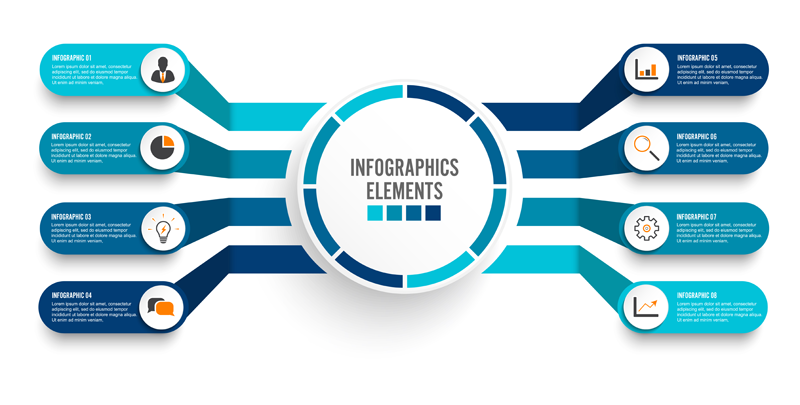
Infographics are great for digital marketing. They use pictures and a few words to explain things. This makes them perfect for online use. They grab attention and make your message clear. Let’s look at how they help in digital marketing.
Grabbing Attention Easily
Infographics are great in digital marketing. Also, they catch people’s eyes quickly. This is important online where we have so much to see. Infographics make messages fun and interesting. So, more people pay attention and interact.
Explaining Things Simply
Marketing often uses facts and numbers. So, infographics make these easy to understand. They can show things like survey results or customer likes. This helps people get the main points fast.
Getting More Likes and Shares on Social Media
People on social media love pictures and visuals. Infographics are perfect for this. They get more likes and shares. For instance, this helps your message reach more people on Facebook, Twitter, and Instagram.
Bringing More Visitors to Your Website
Infographics can lead more people to your website. When others share your infographics, they often link back to your site. So, this is good for your website’s search ranking. More visitors mean more potential customers.
Making Your Brand Memorable
You can use your brand’s colors and logo in infographics. This helps people remember your brand. When they see your infographics, they think of your brand. In other words, this is a smart way to keep your brand in people’s minds.
Saving Money
Making infographics doesn’t have to cost a lot. There are free or cheap tools online. This is great for small businesses or people just starting. Also, you can make cool marketing stuff without spending much.
Spreading Your Message Wide
Infographics are often shared more than just text. This means more people can see your message. They can become popular and reach many people. This is really good for getting your message out there.
Making Emails More Interesting
Emails with infographics are more fun to read. So, they can make people more likely to open and read your emails. Adding infographics to your emails can make them work better.
Showing What You Offer
Infographics can show what your product or service is about. They can tell about the good things and how to use them. Above all, this helps customers understand what you’re offering.
Useful Everywhere
Infographics work well in many places. You can use them on websites, social media, and emails. They fit into different parts of your marketing plan. This makes them very useful.
Infographics help a lot in digital marketing. They grab attention, explain things simply, and do well on social media. For instance, they bring people to your website and make your brand known. They’re cheap to make and spread your message wide. They make emails more interesting and show what you offer clearly. Infographics are helpful in many ways and places in marketing. Therefore, they make your marketing stronger and more fun.
Types of Infographics
Introduction to SEO: Unlocking the Power of Online Visibility
-
What is SEO?
- SEO stands for Search Engine Optimization.
- It's the practice of optimizing websites to improve their visibility and ranking on search engine results pages (SERPs).
1
-
Why is SEO Important?
- Increased visibility: SEO helps your website appear higher on SERPs, leading to more organic traffic.
- Credibility and trust: Higher rankings establish trust and credibility with users.
- Cost-effective: Organic traffic from SEO is free, making it a cost-effective marketing strategy.
- Long-term results: Properly optimized websites can maintain high rankings for a long time.
2
-
How Search Engines Work?
- Crawl: Search engines use bots to discover web pages and gather information.
- Index: The collected data is stored in an index, a massive database.
- Rank: Algorithms analyze indexed pages to determine their relevance and rank them on SERPs.
3
-
SEO Elements
- Keywords: Research and optimize relevant keywords to target your audience.
- On-page optimization: Improve website elements like titles, headings, and meta tags.
- Content creation: Develop high-quality, informative, and engaging content.
- Backlinks: Earn quality backlinks from other reputable websites.
4
-
Types of SEO
- On-Page SEO: Optimizing website elements like keywords, titles, headings, and content.
- Off-Page SEO: Building backlinks and social signals to increase website authority.
- Technical SEO: Enhancing website performance and ensuring search engines can crawl and index your site properly.
5
-
SEO Best Practices
- Mobile optimization: Make your website mobile-friendly for better user experience.
- Site speed: Improve loading times to enhance user engagement and search engine rankings.
- User experience: Create intuitive navigation, user-friendly design, and easy-to-read content.
- Quality backlinks: Earn backlinks from reputable and relevant websites.
6
-
SEO Tools
- Google Analytics: Monitor website traffic, user behavior, and performance metrics.
- Google Search Console: Track website indexing status and resolve technical issues.
- Keyword research tools: Find relevant keywords and analyze search volume and competition.
- SEO plugins: Enhance on-page optimization and improve website performance.
7
-
SEO Mistakes to Avoid
- Keyword stuffing: Overusing keywords unnaturally can harm your rankings.
- Poor user experience: Difficult navigation, slow loading, or low-quality content can deter users.
- Ignoring mobile optimization: Mobile users make up a significant portion of internet traffic.
- Black hat techniques: Unethical practices like buying links or keyword spamming can result in penalties.
8
-
Unlock the Power of Online Visibility with SEO
- Research keywords, optimize your website, and create valuable content.
- Stay up to date with SEO trends and best practices.
- Monitor your website's performance using analytics tools.
- Partner with experts for effective SEO strategies.
Remember, this is just an outline, and the actual design and layout of the infographic can be customized to suit your needs.
9
There are different types of infographics that help us show information in clear ways. The advantages of infographics include making data easy to understand and remember.
Statistical Infographics
These infographics show numbers and data. They use charts and graphs to make statistics easier to understand. For instance, bar charts and pie charts are common in statistical infographics.
Informational Infographics
These infographics explain a topic using text and images. In other words, they help people learn about a subject in a simple way. Therefore, they are great for teaching and explaining.
Timeline Infographics
Timeline infographics show events in order. They help us see how things happened over time. Above all, they make it easy to understand the sequence of events.
Process Infographics
Process infographics show steps in a process. They help explain how something works. For example, they can show how to bake a cake or how a bill becomes a law.
Comparison Infographics
Comparison infographics show differences and similarities between two or more things. They help us compare options side by side. Therefore, they are useful for making decisions.
Measuring the Effectiveness of Infographics
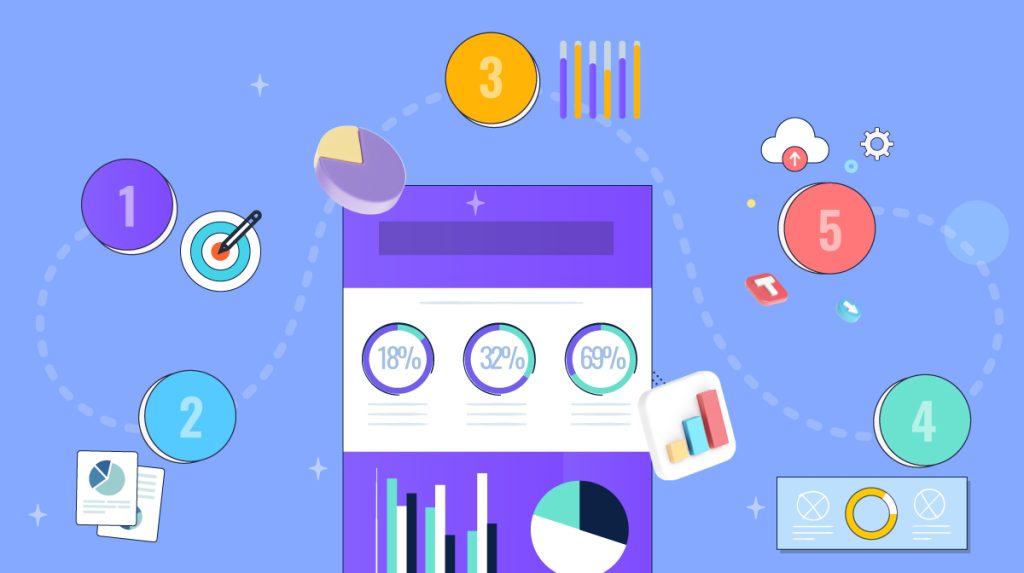
To see how well infographics work, we look at different things. The advantages of infographics include making information clear and easy to share.
Track Shares
See how many times people share your infographic on social media. More shares mean people like it.
Check Engagement
Look at how long people spend looking at your infographic. More time means they are interested.
Monitor Traffic
See if your infographic brings more visitors to your website. More traffic means it’s working well.
- Shares: Shows people like your infographic.
- More Engagement: Shows people find it interesting.
- More Traffic: Shows your infographic is bringing visitors.
Best Practices for Infographics
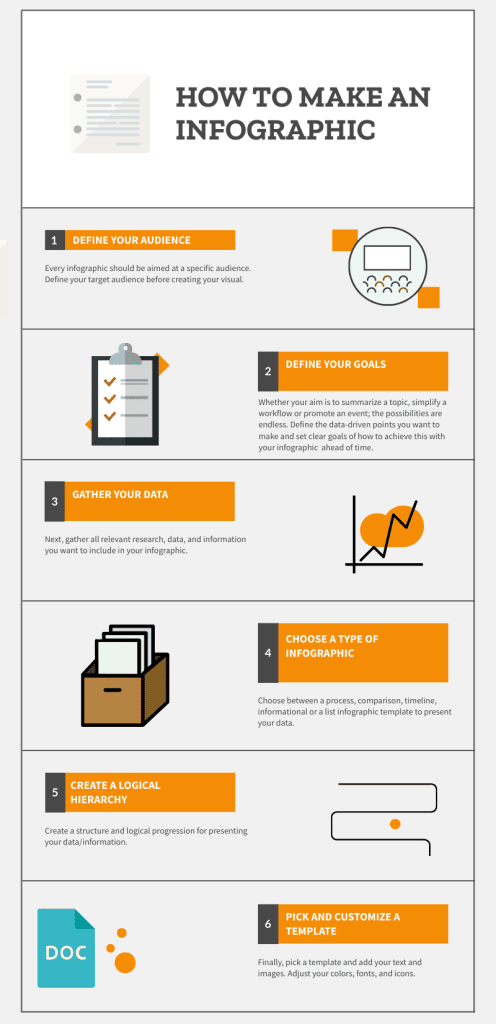
Infographics work best when we follow certain rules. The advantages of infographics include making information easy to understand and share.
Keep It Simple
Use simple words and pictures. So, people can understand quickly.
Use Bright Colors
Bright colors catch the eye. In other words, they make your infographic stand out.
Tell a Story
Make sure your infographic has a clear beginning, middle, and end. Therefore, people will remember it better.
Check Your Facts
Always make sure your information is correct. Above all, you want your infographic to be trustworthy.
- Simple Words: Easy to understand.
- Bright Colors: Eye-catching and attractive.
- Clear Story: Easy to follow.
- Accurate Information: Builds trust.
Key Takeaway
The advantages of infographics are clear. They make information easy to understand and share. Infographics catch the eye with bright colors and simple words. They tell a story that people remember. In other words, they help people learn quickly. So, using infographics can improve your content and reach more people. Above all, always check your facts to keep your infographics trustworthy. Therefore, follow these tips to make effective infographics. If you need help, hire me to create engaging and informative infographics for your needs.

